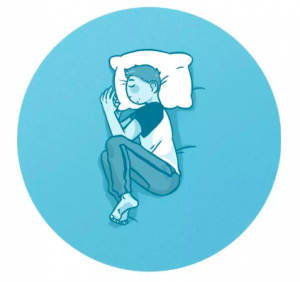
There is an ongoing discussion in the association between cervical manipulation and the incidence of cervical arterial dissection (CAD) followed by stroke. Custom Chiropractor wants to educate you on the basics of what a stroke is.
What is a Stroke?
Facial drooping , arm weakness, speech difficulty? Its time to call 9-1-1 because these are signs of having a stroke. Each year nearly 800,000 people experience a new or recurrent stroke. Stroke occurs when blood flow to an area of brain is cut off, which then deprives the brain of oxygen and can lead to death of the cells. There are two types of strokes that can occur.one of which is called an Ischemic stroke occurs in the blood vessels of the brain. Clots can form in any blood vessels and then travel to the brain. Ischemic stroke can also occur when too much fatty deposits and cholesterol which clogs the brain’s blood vessels. About 80% of all strokes are ischemic. Hemorrhagic strokes occur when a blood vessel in the brain breaks or ruptures. The most common causes of hemorrhagic stroke are high blood pressure and brain aneurysms which is a weakness or thinness in the blood vessel wall. When brain cells die during a stroke, abilities controlled by that area of the brain are lost. There are various affects that a stroke can have on the body depending on the location of the stroke.
What factors play a primary role in determination of who is more likely to have a stroke?
- Age — The chance of having a stroke approximately doubles for each decade of life after age 55. While stroke is common among the elderly, a lot of people under 65 also have strokes.
- Heredity (family history) — Your stroke risk may be greater if a parent, grandparent, sister or brother has had a stroke.
- Sex (gender) — Each year, women have more strokes than men, and stroke kills more women than men. Use of birth control pills, pregnancy, history of preeclampsia/eclampsia or gestational diabetes, oral contraceptive use, and smoking, and post-menopausal hormone therapy may pose special stroke risks for women. Be sure to discuss your specific risks with your doctor.
- Prior stroke, TIA or heart attack — The risk of stroke for someone who has already had one is many times that of a person who has not. Transient ischemic attacks (TIAs) are “warning strokes” that produce stroke-like symptoms but no lasting damage. TIAs are strong predictors of stroke. A person who’s had one or more TIAs is almost 10 times more likely to have a stroke than someone of the same age and sex who hasn’t. Recognizing and treating TIAs can reduce your risk of a major stroke. TIA should be considered a medical emergency and followed up immediately with a healthcare professional. If you’ve had a heart attack, you’re at higher risk of having a stroke, too.
Is chiropractic neck manipulation safe?
Neck pain and some types of headaches are treated through precise cervical manipulation. Cervical manipulation, often called a neck adjustment, works to improve joint mobility in the neck, restoring range of motion and reducing muscle spasm, which helps relieve pressure and tension. Neck manipulation, when performed by a skilled and well-educated professional such as a doctor of chiropractic, is a remarkably safe procedure.
Some reports have associated high-velocity upper neck manipulation with a certain rare kind of stroke, or vertebral artery dissection. However, evidence suggests that this type of arterial injury often takes place spontaneously in patients who have pre-existing arterial disease. These dissections have been associated with everyday activities such as turning the head while driving, swimming, or having a shampoo in a hair salon. Patients with this condition may experience neck pain and headache that leads them to seek professional care—often at the office of a doctor of chiropractic or family physician—but that care is not the cause of the injury. The best evidence indicates that the incidence of artery injuries associated with high-velocity upper neck manipulation is extremely rare—about one to three cases in 100,000 patients who get treated with a course of care. This is similar to the incidence of this type of stroke among the general population.
If you are visiting your doctor of chiropractic with upper-neck pain or headache, be very specific about your symptoms. This will help your doctor of chiropractic offer the safest and most effective treatment, even if it involves referral to another health care provider.
When discussing the risks of any health care procedure, it is important to look at that risk in comparison to other treatments available for the same condition. In this regard, the risks of serious complications from spinal manipulation for conditions such as neck pain and headache compare very favorably with even the most conservative care options. For example, the risks associated with some of the most common treatments for musculoskeletal pain—over-the-counter or prescription nonsteroidal anti-inflammatory drugs (NSAIDS) and prescription painkillers—are significantly greater than those of chiropractic manipulation.
Preventative measure that can be taken:
1) Exercise, even if it’s for 20 minutes every day
2) Lower your blood Pressure if its too high
3) Treat your diabetes
4) Quit Smoking
5) Drink lots of water
From the Santa Clara custom Chiropractic Family we hope that this has given you more of an insight to strokes. If you have any further questions please feel free to contact us!





